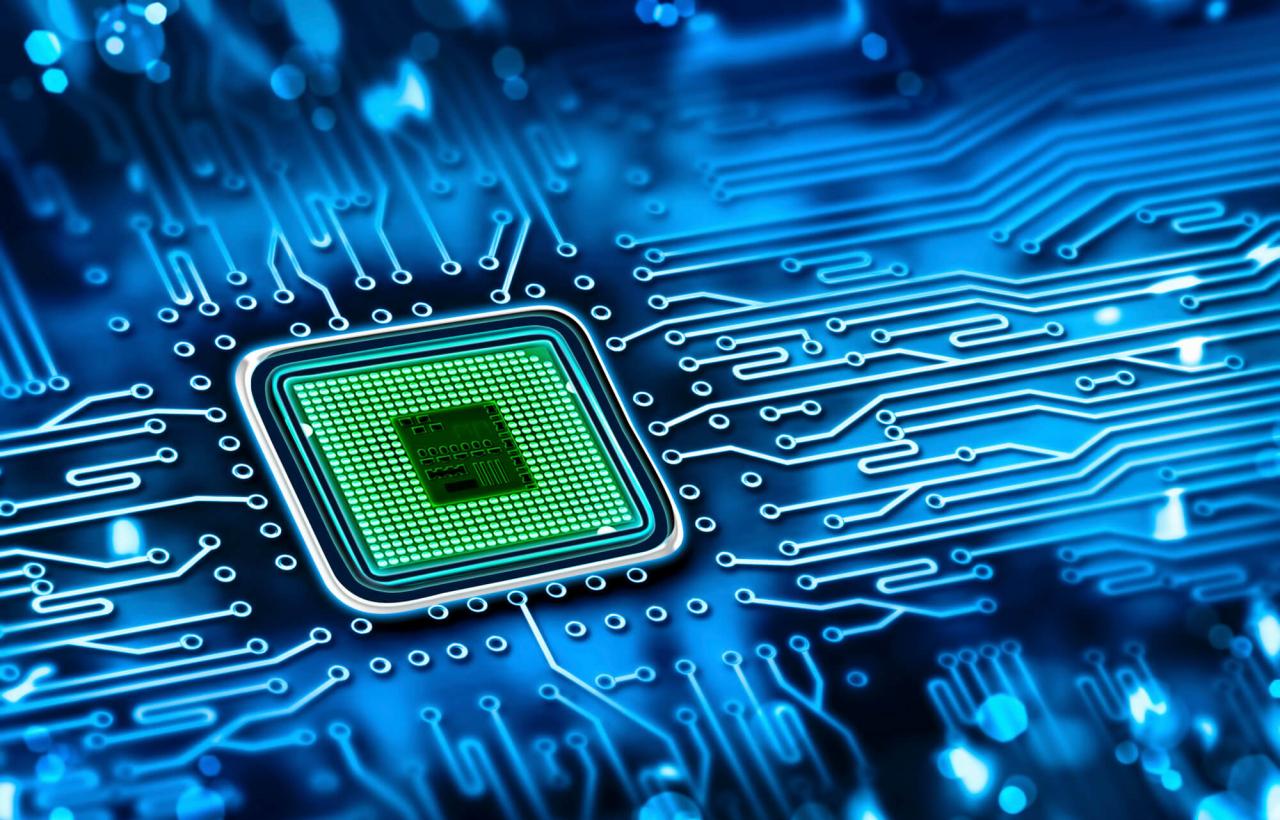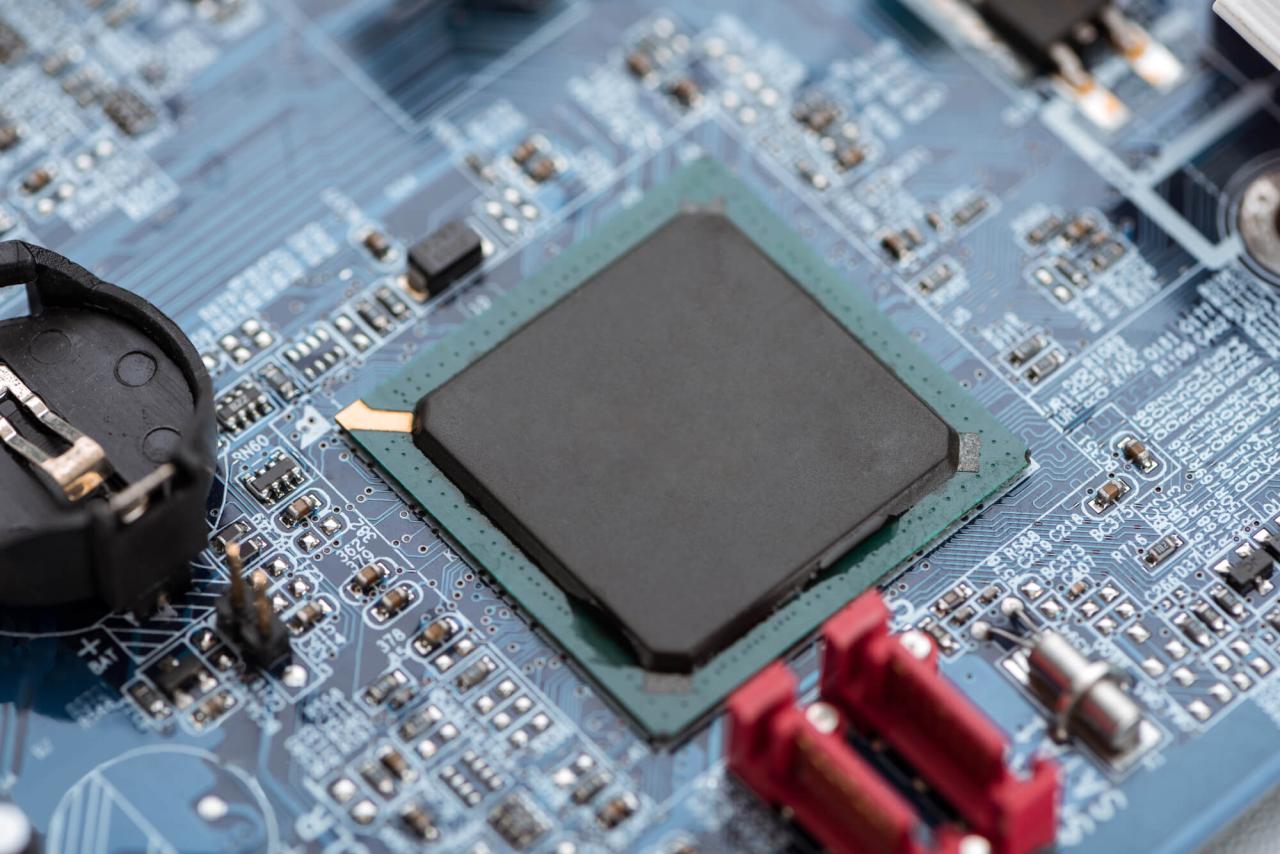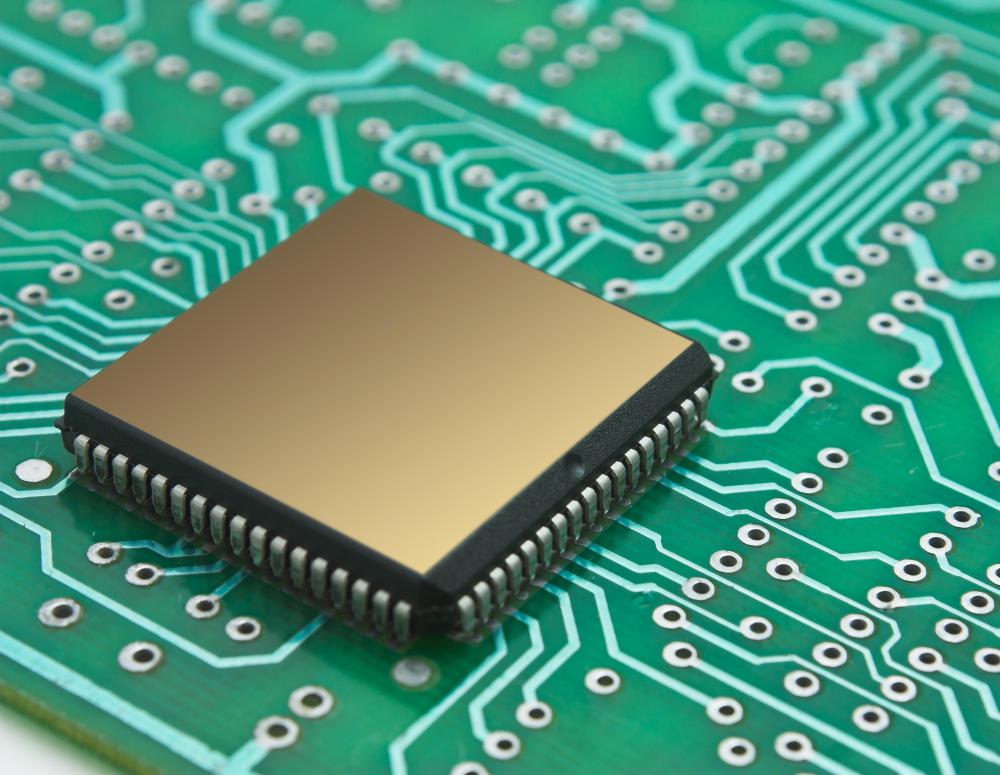Chip iPhone stands at the forefront of mobile innovation, transforming how we interact with technology every day. Apple’s relentless pursuit of excellence in chip design has not only enhanced performance but also redefined user experience across its devices. Recent advancements have made these chips more efficient, paving the way for longer battery life and incredible processing speeds.
The journey of iPhone chips has been remarkable, evolving from basic processing units to sophisticated systems on a chip (SoC) that integrate AI capabilities and optimize performance for demanding applications. Each iteration has brought significant improvements in speed and efficiency, showcasing Apple’s commitment to pushing the boundaries of what’s possible in mobile technology.
Chip Technology in iPhones
The evolution of chip technology in iPhones has been a cornerstone of Apple’s strategy, enabling significant advancements in performance, efficiency, and user experience. From the initial A4 chip in the iPhone 4 to the latest iterations, Apple’s focus on optimizing chip design has consistently set benchmarks in the smartphone industry.
The iPhone’s chip architecture has undergone remarkable transformations, each generation bringing enhanced capabilities and performance. The latest chip, the A17 Pro, is built on a 3nm process technology, significantly improving efficiency and speed. With a 6-core CPU and a 6-core GPU, the A17 Pro delivers remarkable performance benchmarks, often surpassing competitors. For instance, the CPU performance is reported to be up to 10% faster than its predecessor, while the GPU is 20% more powerful, enabling high-end gaming and advanced graphics processing with ease.
Performance Specifications of the Latest iPhone Chip
The specifications of the A17 Pro chip highlight its significant advancements in processing power and graphics performance. These features are instrumental in improving the overall user experience on iPhones. Key specifications include:
- CPU: 6-core architecture with 2 high-performance cores and 4 efficiency cores.
- GPU: 6-core GPU capable of delivering console-quality graphics.
- Neural Engine: 16-core Neural Engine for advanced machine learning tasks.
- RAM Support: Up to 8 GB of unified memory, enhancing multitasking capabilities.
- AI Performance: Supports advanced AI functionalities, improving photography and user interactions.
The impact of this chip’s specifications is profound, particularly in battery life and device performance. The A17 Pro’s design allows for greater efficiency, reducing power consumption during intensive tasks.
Impact of Chip Optimization on Battery Life
Chip optimization plays a crucial role in extending battery life and improving device performance in iPhones. The integration of efficiency cores within the CPU allows the device to execute light tasks without utilizing the power-intensive performance cores, effectively conserving energy.
The A17 Pro chip’s advanced power management features significantly enhance battery longevity. Users can experience longer usage times, even during heavy applications or gaming sessions. For example, Apple claims that users can expect up to 20 hours of video playback on a single charge.
“With the A17 Pro, users can enjoy peak performance without sacrificing battery life, a hallmark of Apple’s engineering excellence.”
In practical terms, this means that users can engage in demanding tasks, such as gaming or video editing, without the worry of rapid battery depletion. Overall, the continuous evolution of chip technology in iPhones not only revolutionizes performance but also enhances the overall usability and efficiency of the device.
Comparison of iPhone Chips

The evolution of iPhone chips has played a crucial role in enhancing the performance and capabilities of Apple’s flagship devices. Each new chip introduces significant improvements, not only in processing power but also in efficiency and functionality. Understanding these advancements provides insight into how iPhones have become powerful tools for both everyday users and professionals alike.
Comparative Table of A-Series Chips
The following table highlights the key differences between the A-series chips utilized in various iPhone models over the years, showcasing advancements in architecture, manufacturing processes, and overall performance metrics.
| Chip Model | Year Released | CPU Cores | GPU Cores | Manufacturing Process (nm) | Key Advancements |
|---|---|---|---|---|---|
| A4 | 2010 | 1 | PowerVR SGX535 | 45 | First 1 GHz processor for iPhone |
| A6 | 2012 | 2 | PowerVR SGX 30×0 | 32 | Improved performance with dual-core architecture |
| A8 | 2014 | 2 | PowerVR GX6450 | 20 | 64-bit architecture introduced |
| A10 Fusion | 2016 | 4 | 6-core GPU | 16 | Energy-efficient design with performance and efficiency cores |
| A12 Bionic | 2018 | 6 | 4-core GPU | 7 | Neural Engine for advanced machine learning |
| A14 Bionic | 2020 | 6 | 4-core GPU | 5 | First 5nm chip, improved power efficiency |
| A15 Bionic | 2021 | 6 | 4-core GPU | 5 | Enhanced graphics and processing capabilities |
| A16 Bionic | 2022 | 6 | 5-core GPU | 4 | Increased efficiency and performance for multitasking |
The advancements in each successive chip demonstrate how Apple has consistently pushed the boundaries of mobile processing power. With each iteration, improvements in architecture have allowed for enhanced performance, better battery life, and superior graphics capabilities.
Impact of Chip Architecture on App Performance, Chip iphone
Apple’s chip architecture plays a pivotal role in determining how efficiently apps operate on iPhones. Each A-series chip integrates a variety of elements designed to optimize performance:
– CPU and GPU Integration: The tight integration of CPU and GPU allows for seamless processing of graphics-heavy applications, significantly enhancing gaming and multimedia experiences.
– Neural Engine: The introduction of dedicated neural processing units has enabled advanced functionalities such as real-time photo and video enhancement, machine learning tasks, and on-device AI processing.
– Unified Memory Architecture (UMA): This innovation allows all components of the chip to access the same memory pool, resulting in faster data retrieval and improved multitasking capabilities.
– Thermal Management: Each chip is designed with heat management in mind, which prevents thermal throttling during intensive tasks, ensuring sustained performance.
– Power Efficiency: Through advancements in manufacturing processes, newer chips consume less power for the same or greater performance levels, extending battery life significantly.
The evolving architecture of iPhone chips has set a benchmark for app performance, allowing developers to create more sophisticated applications while ensuring that users enjoy smooth and responsive experiences on their devices.
Manufacturing Process of iPhone Chips

The manufacturing process of Apple’s chips is a complex interplay of advanced engineering, precision fabrication, and cutting-edge materials. Apple relies on a highly specialized supply chain that combines the latest semiconductor technology with rigorous quality control measures to produce its A-series chips. This intricate process begins with the selection of materials and extends through various stages of fabrication, assembly, and testing.
The production of iPhone chips involves several key steps. Initially, silicon wafers serve as the fundamental building blocks. These wafers undergo a process called photolithography, where light patterns are used to etch circuit designs onto the silicon surface. This step is crucial as it defines the microscopic structures that will form the chip’s architecture. Once the designs are in place, various deposition and etching techniques are employed to create transistors and interconnections, ultimately forming the complete chip.
Role of Semiconductor Foundries in Chip Production
Semiconductor foundries play a pivotal role in the production of iPhone chips. Companies like TSMC (Taiwan Semiconductor Manufacturing Company) are instrumental in fabricating Apple’s designs. These foundries possess the advanced technology and facilities necessary for high-volume production of complex chips.
The collaboration between Apple and semiconductor foundries is centered around three primary aspects:
- Technology Adoption: Foundries must continuously innovate to keep up with Apple’s evolving chip designs, often utilizing leading-edge process nodes such as 5nm and 7nm technology.
- Yield Management: Achieving a high yield, or the number of functioning chips from a batch, is crucial for cost-effectiveness. Foundries implement stringent quality controls and advanced analytics to optimize production processes.
- Scalability: As demand for iPhones rises, the ability of foundries to scale production quickly without sacrificing quality becomes essential. This requires significant investment in manufacturing infrastructure and workforce training.
Challenges in Chip Manufacturing and Testing
The manufacturing and testing phases of iPhone chips are fraught with challenges that can impact overall performance and reliability. These challenges stem from the complexity of modern chip designs and the precision required in their fabrication.
Key challenges include:
- Process Variability: Small variations in the manufacturing process can lead to defects, which may compromise chip performance. Manufacturers must implement rigorous controls to minimize variability.
- Heat Management: As chips become more powerful, managing heat dissipation during operation becomes critical. Effective thermal management solutions must be designed and tested to ensure chip longevity.
- Testing Complexity: The testing process for chips involves a multitude of parameters that must be evaluated to ensure functionality. This includes performance benchmarks, power efficiency, and thermal behavior, demanding sophisticated testing methodologies.
In summary, the manufacturing process of iPhone chips is a blend of advanced technology, meticulous attention to detail, and collaborative efforts with semiconductor foundries, all working to overcome challenges inherent in chip production.
Future of iPhone Chips: Chip Iphone

The future of iPhone chips promises to be an exciting journey as Apple continues to innovate and push the boundaries of mobile technology. The upcoming generations of iPhone chips are expected to integrate advanced technologies that will enhance performance, efficiency, and user experience. With a strong focus on artificial intelligence (AI) and machine learning, the evolution of chip design will redefine how devices process data and interact with users.
Integration of Advanced Technologies
Apple is likely to incorporate several cutting-edge technologies into its future chip designs. These advancements will not only improve raw processing power but will also enhance the overall efficiency of iPhones. Some anticipated technologies include:
- 5G and Beyond: Future iPhone chips will likely support faster and more reliable wireless communication standards, enabling seamless streaming, gaming, and connectivity experiences.
- Enhanced Neural Processing Units (NPUs): With AI becoming integral to mobile computing, NPUs will become more sophisticated, allowing for real-time data processing and improved features like facial recognition and image enhancement.
- Augmented Reality (AR) Capabilities: The integration of specialized hardware for AR experiences will empower developers to create more immersive applications, making use of advanced sensors and chip functionalities.
- Energy Efficiency Innovations: As sustainability becomes more critical, future chips are expected to employ energy-saving technologies that prolong battery life while maintaining high performance.
Influence of AI and Machine Learning on Chip Design
AI and machine learning are set to revolutionize the way chips are designed and optimized. The future of iPhone chips will see a greater emphasis on self-learning algorithms that can adapt to user behavior and system demands. This shift could lead to:
- Dynamic Resource Allocation: Chips may be designed to prioritize tasks based on real-time usage patterns, enhancing performance during peak activity periods.
- Personalized User Experiences: Machine learning can tailor features and performance settings to individual users, improving responsiveness and functionality.
- Predictive Maintenance: Future chips could incorporate AI-driven diagnostics that proactively identify hardware issues before they affect user experience, ensuring longevity and reliability.
Apple’s Strategic Plans for Chip Development
Apple has consistently pursued a strategy aimed at achieving greater independence from third-party suppliers. This approach is expected to shape the future of iPhone chips significantly. Key aspects of this strategy include:
- In-House Chip Production: By investing heavily in their semiconductor division, Apple aims to design and manufacture chips tailored specifically for its devices, which will optimize integration and performance.
- Vertical Integration: Apple’s focus on vertical integration allows for better control over the entire supply chain, reducing reliance on external component manufacturers and enhancing the company’s ability to innovate.
- Long-term Research Investments: Apple is likely to continue investing in long-term research initiatives aimed at developing breakthrough technologies that can be incorporated into future chips, ensuring it remains at the forefront of mobile technology.
“The intersection of AI and chip design heralds a new era of mobile computing that will change the way users interact with their devices.”
FAQ Resource
What is the latest chip used in iPhones?
The latest chip used in iPhones is the A17 Pro, introduced with the iPhone 15 series, featuring advanced performance and energy efficiency.
How do iPhone chips impact battery life?
iPhone chips are designed to optimize power consumption, which enhances battery life by reducing energy usage during processing tasks.
What materials are used in the manufacturing of iPhone chips?
iPhone chips are primarily made from silicon, along with other materials like metals and insulators necessary for semiconductor fabrication.
How does Apple ensure the quality of its chips?
Apple employs rigorous testing and quality assurance processes throughout the manufacturing stages to ensure high performance and reliability.
Will future iPhone chips use AI technology?
Yes, future iPhone chips are expected to incorporate advanced AI technologies to enhance processing capabilities and improve user experience.
In the smartphone market, few devices sparked as much debate as the Samsung Note7 , notorious for its battery issues. This flagship model was set to revolutionize the way we interact with technology but quickly became a cautionary tale, reminding consumers of the importance of safety in innovation.
With the latest offers emerging, the buzz around the current promotion on iPhones is palpable. These promotions are not just about price cuts; they represent a chance for consumers to experience cutting-edge technology at an accessible cost, making it an ideal time for upgrades.